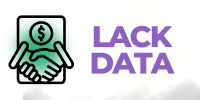Key to SEO positioning In the context of marketing and SEO , indexing refers to the process by which search engines, like Google, discover, crawl, and add URLs to their index. This index is a massive database containing information about web pages, allowing search engines to display results relevant to users’ queries. An indexed page is one that is part of this index and therefore has a chance of appearing in search results.
Importance of Indexing in SEO
Indexing is an essential step for SEO telegram number database positioning . Without it, your content, no matter how well optimized, will remain invisible to search engines, preventing potential users from finding it. It is the foundation upon which the entire positioning process is built. A well-optimized but unindexed website is like a store with its door closed: it has excellent products, but no one can access them.
Indexing isn’t just about presence in search results; it also influences ranking . Once indexed , a page receives a position in search results, determined by a number of seo in 2025 searchgpt and the future of search engines SEO factors , both on-page and off-page . These factors include content quality, website structure, domain authority, and the quantity and quality of inbound links, among others.
Factors Influencing Indexing
Several factors can affect the speed and efficiency of indexing :
Website age: Older websites with a consistent key to SEO positioning history tend to be indexed more quickly.
Publishing frequency: Regularly publishing new content helps search engines crawl your website more frequently, making it easier for new pages to be indexed.
Competition: In highly competitive niches, indexing may be slower because search engines have to process a large amount of information.
Content quality: High-quality content that is relevant
useful to users is more likely to be indexed and rank well in search results.
Website structure: A clear structure with intuitive lob directory navigation makes it easier for search engine robots to crawl and therefore index.
Internal links: Internal links help search engines navigate the website and discover new pages, improving indexing.
Sitemap: A sitemap is an XML file that contains a list of all the URLs on a website, making it easier for search engines to find and index pages.
Methods for Checking Indexing
There are several tools to check if your pages are indexed :
Google Search Console
Google Search Console is a fundamental tool for SEO management . It provides detailed information about indexing , including the number of indexed pages, indexing errors , and excluded pages. The “Coverage” section offers a comprehensive analysis of your website’s indexing .
“site:” command
This command, used directly in Google’s search engine, allows you to perform a quick search to verify which pages on a domain are indexed . Typing “site:mydomain.com” will return a list of the indexed URLs for that domain.
How to Improve Indexing
To speed up the indexing process , you can implement the following strategies:
Create high-quality content: Relevant and valuable content is more likely to be indexed quickly.
Optimize website structure: A clear and well-organized structure facilitates indexing.
Use internal links: Make it easier for search engine robots to navigate your site.
Create and submit a sitemap: Inform search engines about your website’s URLs.
Use the “Inspect URL” tool in Google Search key to SEO positioning Console: Allows you to request indexing of specific URLs.
Promote content on social media: Increasing the visibility of your content can attract more traffic and increase your chances of being indexed.
Is it necessary to index all content?
Not all website content should be indexed . Some pages, such as filter pages, internal results pages, tags, or legal pages, can be excluded from indexing using the “noindex” directive. This prevents duplicate or irrelevant content from being indexed and helps optimize search engine efficiency.
